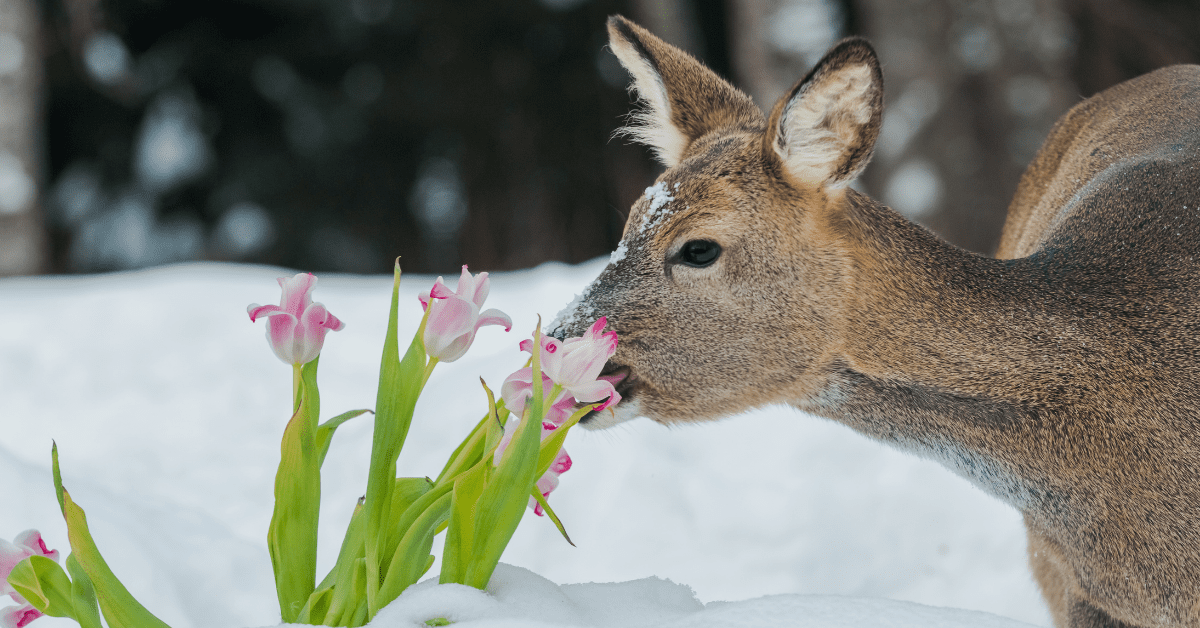
Depending on your location, deer feeding on landscapes can be a problem any time of the year. If you have clients seeking a way to save their backyards from becoming a buffet, there are several different approaches you can take.
Deer can be persistent once they’ve found a feeding ground they like so discourage them early on from returning. Typically, it is a good rule of thumb to employ a mixture of these solutions to keep deer away from your client’s prized plants.
Barriers
Obviously, the best way to prevent deer browsing it to stop them from getting to a property in the first place. There are several barrier options when it comes to discouraging deer from feeding in a landscape.
A traditional fence can be the most effective method, but the size of the property may make this option cost prohibitive. Woven wire or wire mesh fences can provide protection for larger areas and are durable enough for uneven terrain. Fences should also be at least 8 feet high, and local regulations may prevent a homeowner from being able to install a fence this high.
Adding overhead obstructions can allow you to install a fence that is shorter that a deer is less likely to want to jump over. Also, while deer can jump high and far, they can’t do both simultaneously. Planting a hedge on either side of the fence creates depth and discourages jumps.
If a customer only has a small area of plants they are trying to preserve, a micro-exclosure can be a good solution. Deer tend to be reluctant to enter small spaces and mirco-exclosures that are 8 x 16 feet and only 50 inches high have been found to successfully exclude deer.
Netting is another way to preserve small plantings, as it allows the plants to get the necessary light and water but keeps deer snouts away.
Deer-Resistant Plants
While there are plants that deer are less likely to eat, stress to your clients that no plant material is entirely deer-proof. The winter months can make deer particularly desperate if significant snow cover or colder temperatures are driving them to eat just about anything.
The factors that make plants unattractive to deer include: a strong scent, thick or leathery leaves or a fuzzy or bristly texture. Some of the plants less appetizing to deer include lamb’s ears, hellebores, ferns, catmint, Russian sage, and lavender. You can find more extensive lists on university extensions such as Michigan State’s.
It’s also a good idea to avoid planting varieties that deer do love to eat as these are more likely to attract them. This can vary some from regions but a handful of their favorites include arborvitae, hostas, pansies, day lilies, and tulips. Even though deer love tulips, they tend to avoid other bulbs such as daffodil, allium, grape hyacinth and autumn crocus.
Deer Repellent Products
If your customers do really want to use plants that are beloved by deer, repellents are one way to discourage deer from eating them. However, it should be noted repellents are typically more effective on less preferred plants.
There are two types of deer repellent products: contact or area. Contact repellents are applied to plants to give them an unpleasant taste. Area repellents release an odor that discourage deer from approaching an area.
It is best to apply repellents early on before deer begin to browse on them. The repellents should be changed periodically so deer don’t become accustomed to them. Both types of repellents need to be reapplied often as rain can make the scent or taste wear off. Also, the colder the temperature is, the more the odor dissipates.

